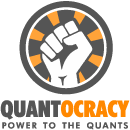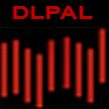PutWrite vs. BuyWrite Index Differences
A short but interesting academic paper about differences in a well-known CBOE PutWrite and BuyWrite Indexes:
Author: Israelov
Title: PutWrite versus BuyWrite: Yes, Put-Call Parity Holds Here Too
Link: https://papers.ssrn.com/sol3/papers.cfm?abstract_id=2894610
Abstract:
The CBOE PutWrite Index has outperformed the BuyWrite Index by approximately 1.1 percent per year between 1986 and 2015. That is pretty impressive. But troubling. Yes – troubling – because the theory of put-call parity tells us that such outperformance should be almost impossible via a compelling no-arbitrage restriction. This paper explains the mystery of this outperformance, which has implications for portfolio construction.
Notable quotations from the academic research paper:
"Writing equity index covered calls is an effective approach to jointly earning the equity and volatility risk premium. So too is writing naked equity index put options. Which approach is better? Many investors compare the historical performance of the two approaches for the answer, potentially leading to the conclusion that put-writing is preferable to covered calls. On the surface, it appears that writing put options would be the preferred approach. The CBOE PutWrite Index (PUT) has outperformed the BuyWrite Index (BXM) by approximately 1.1 percent per year between 1986 and 2015. That is pretty impressive. But troubling. Yes – troubling – because the theory of put-call parity tells us that such outperformance should be almost impossible via a compelling no-arbitrage restriction.
The primary reason behind the performance difference in the PutWrite and BuyWrite Indices is due to a construction difference during just four hours per month. A quirky difference in their portfolio construction results in the PutWrite Index missing out on approximately four hours per month of S&P 500 Index return relative to the BuyWrite Index.
Each month on the morning of option expiration, both the BuyWrite’s call option and the PutWrite’s put option expire and settle at the same time at the Special Open Quotation (SOQ). At this time, option expiration fully divests the PutWrite Index of its equity exposure. Until it re-establishes a short put option position, it is a zero beta portfolio. In contrast, at the same time, the BuyWrite portfolio becomes a beta one portfolio with the expiration of its call option, because it is fully invested in the S&P 500 Index with no corresponding short call option position. It remains a beta one portfolio until it re-establishes its short call option position.
So, over this four-hour window, the BuyWrite Index is over-exposed to the S&P 500 relative to its longterm average exposure. Similarly, the PutWrite Index is under-exposed to the S&P 500 relative to its long-term average exposure.
As an example, on average, between 2004 and 2015, the S&P 500 Index was down 23 basis points on option expiration mornings. The equity returns over this four hour period 12 times per year suggests 2.7% of annual underperformance for the BuyWrite Index relative to the PutWrite Index. Adding back in the intercept (annualized) provides a combined effect of 2.0% of annualized expiration-date underperformance. This is very close to the 2.1% the BuyWrite Index underperformed the PutWrite Index over the same 2004 to 2015 period."
Are you looking for more strategies to read about? Check http://quantpedia.com/Screener
Do you want to see performance of trading systems we described? Check http://quantpedia.com/Chart/Performance
Do you want to know more about us? Check http://quantpedia.com/Home/About
Share onLinkedInTwitterFacebookRefer to a friend
























